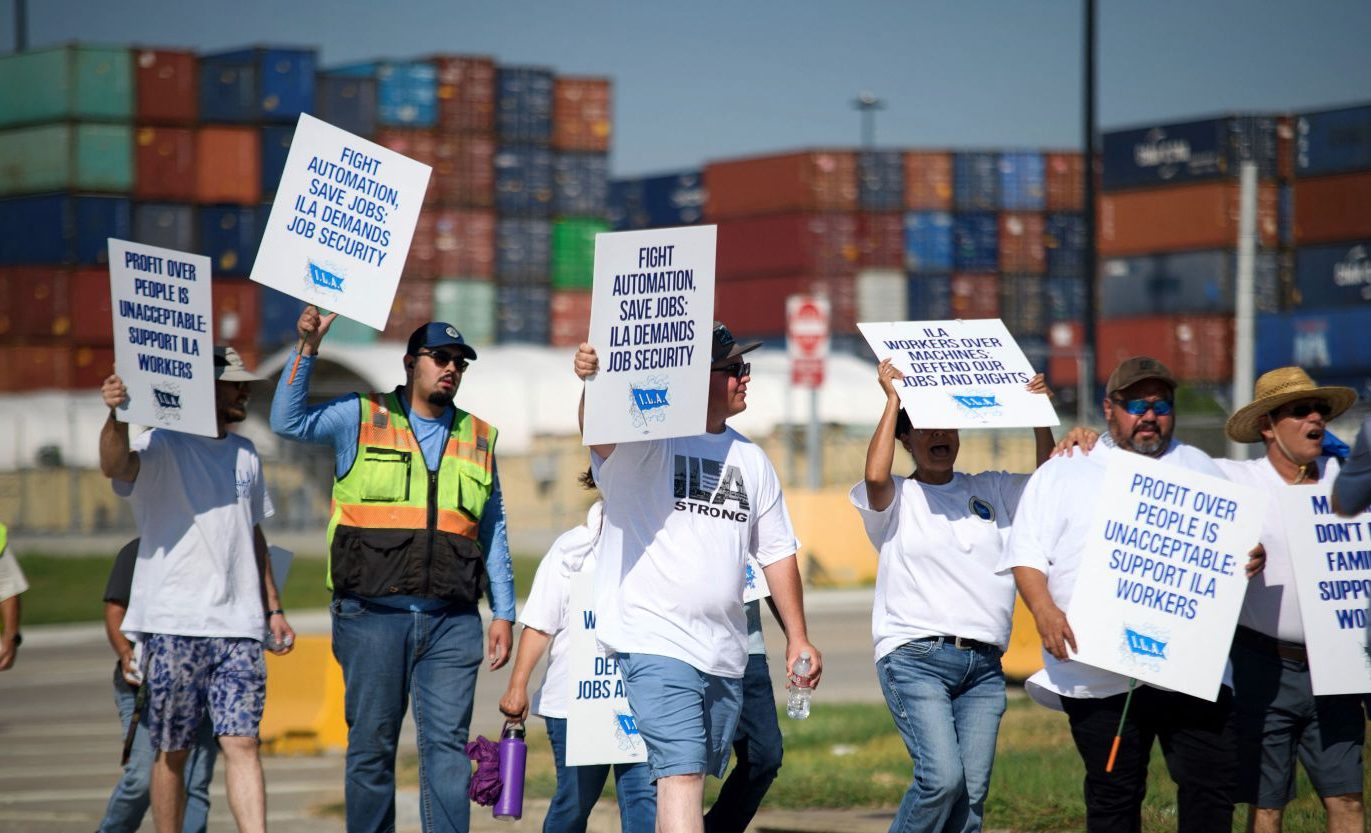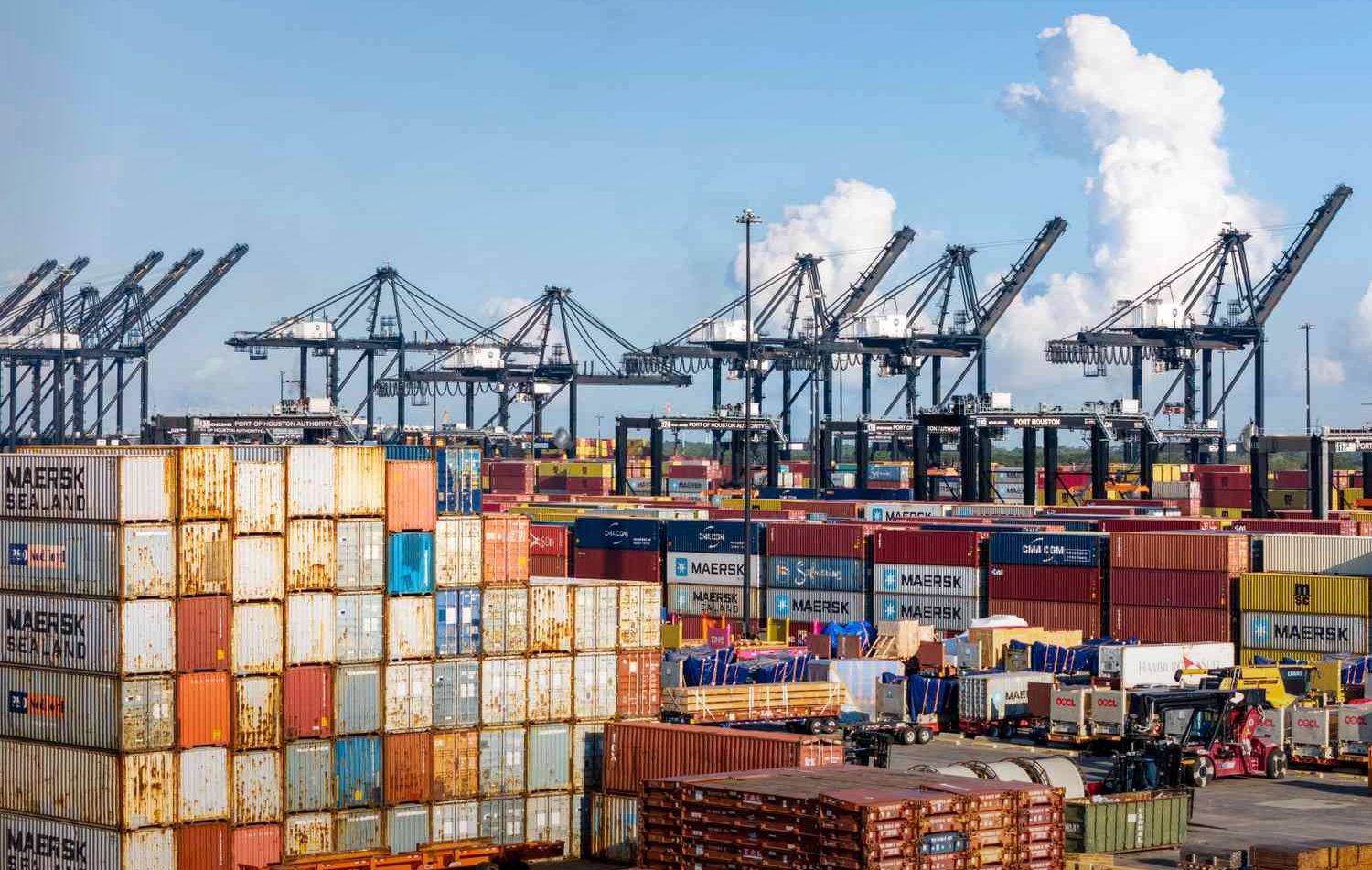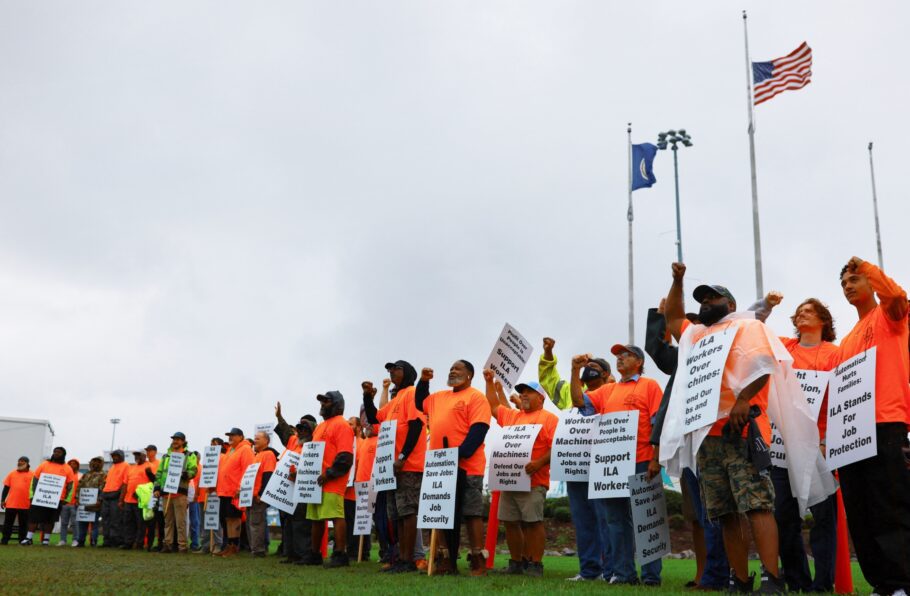The ongoing dock workers strike has captured the attention of both the public and the economy, raising questions about its implications for supply chains and consumer goods. As ports shut down operations, it’s crucial to understand what this strike means for everyday life, from toilet paper shortages to the broader economic impact.
Table of Contents
- What is the Dock Workers Strike About?
- Causes of the Strike
- Impact on Consumers
- Government Intervention
- Port Strike Update: What to Expect
- Future Implications of the Strike
- What Should You Do?
- Final Thoughts
- Frequently Asked Questions
What is the Dock Workers Strike About?
The dock workers strike primarily revolves around wage disputes, working conditions, and collective bargaining agreements between port workers and shipping companies. These negotiations are crucial as they determine the pay, hours, and safety measures for thousands of workers who keep the ports operational. As one of the backbones of the supply chain, these workers are essential to the movement of goods both nationally and internationally.
The current strike is not an isolated incident; it reflects a broader trend in labor relations across the country. Strikes in the past have often led to significant economic repercussions, and this time is no different. The potential for widespread shortages in essential items like toilet paper and other goods is a real concern, making it essential for consumers to understand the stakes involved.
Causes of the Strike
Several factors contribute to the current dock workers strike:
- Wage Disputes: Workers are advocating for better pay that reflects the increasing cost of living and their essential role in the supply chain. With inflation affecting various sectors, many workers feel that their salaries are not keeping pace with the rising costs.
- Working Conditions: Many workers have raised concerns about safety and health conditions at ports, especially post-pandemic. Issues like overcrowding, inadequate safety measures, and insufficient health protocols have led to frustrations among dock workers.
- Collective Bargaining Agreements: The need for updated agreements that protect workers’ rights and ensure fair treatment is a significant point of contention. As these agreements expire, the workers are pushing for new terms that better represent their needs and concerns.
- Automation Concerns: The rise of automation in the shipping industry has also created anxiety among dock workers. Many fear that increased automation may lead to job losses, leading to calls for job security measures in any new agreements.

Impact on Consumers
The dock workers strike has already begun to affect consumers in various ways:
- Shortages: As ports close and ships are delayed, consumers may face shortages of essential items, including food, household goods, and other necessities. The immediate effect can often be seen in grocery stores and other retailers.
- Price Increases: With limited supply, prices for certain items may rise significantly, affecting budgets across the board. This inflation can extend beyond just groceries to include a wide range of consumer products.
- Panic Buying: Concerns about shortages have led to panic buying, further exacerbating the situation. When people fear that essential goods will become scarce, they often rush to stock up, which can deplete supplies even faster.
- Delivery Delays: Online shopping and deliveries are also affected. Consumers might experience delays in receiving their orders, leading to frustrations and inconveniences.
Understanding these impacts can help consumers make informed decisions and avoid unnecessary panic during this challenging time. It is also essential to consider the long-term implications of these disruptions on consumer behavior.
Government Intervention
Given the potential economic fallout from the dock workers strike, government intervention may play a crucial role. The Taft-Hartley Act allows the government to intervene in labor disputes if they pose a national emergency. This intervention could include:
- Mediation: Bringing in neutral third parties to facilitate discussions between workers and employers. Mediation can often lead to quicker resolutions, benefiting both sides.
- Temporary Solutions: Implementing measures to alleviate immediate supply chain disruptions while negotiations continue. This could include using the National Guard or other federal resources to keep ports operational.
Understanding the legal framework surrounding labor disputes helps clarify the government’s role and potential actions during the strike. Past government interventions have been met with mixed reactions, often igniting debates about workers’ rights versus the economic needs of the country.
Port Strike Update: What to Expect
As the situation continues to unfold, it’s essential to remain aware of what to expect regarding the port strike:
- Resolution Timeline: It’s unclear how long the strike will last, but indications suggest that both parties are keen on reaching a resolution. Regular updates from both the union and employers can provide clarity on progress.
- Potential Scenarios: Various scenarios may arise, from a full resolution to continued disruptions, depending on the negotiations. In some cases, temporary agreements may be reached to reopen ports while discussions continue.
- Public Sentiment: Public opinion may shift as the strike progresses. While many may sympathize with the workers’ demands, prolonged disruptions can lead to frustration among consumers and businesses alike.
Staying updated on the latest developments will be crucial as the situation evolves. Keep an eye on reputable sources such as The New York Times for ongoing coverage.

Future Implications of the Strike
The dock workers strike is not just a momentary disruption; it may have lasting effects on various aspects of the economy and labor relations:
- Supply Chain Adjustments: Companies may be forced to reevaluate their supply chain strategies. Some may choose to source goods from different regions or invest in more local suppliers to reduce reliance on affected ports.
- Changes in Consumer Behavior: The strike may lead to changes in consumer habits, such as increased demand for local products or alternative shopping methods, including bulk purchasing and stocking up on essentials.
- Long-term Labor Relations: The outcome of this strike could set a precedent for future labor negotiations in the shipping and logistics sectors. It may also influence labor movements across other industries, reinforcing the need for fair treatment and rights for workers.
Understanding these potential implications is crucial for both consumers and businesses as they navigate this challenging landscape.
What Should You Do?
As consumers, it’s important to stay proactive during this time:
- Stay Informed: Keep an eye on the news for updates on the strike and any potential resolutions. Understanding the situation will help you make informed decisions.
- Stock Up Wisely: While panic buying can exacerbate shortages, consider stocking up on essentials in moderation. Focus on non-perishable items and essential goods you regularly use.
- Support Local Businesses: If possible, shop at local stores that may have stock available. Supporting local businesses can also help mitigate the impacts of the strike on your community.
By being proactive and informed, consumers can better navigate the challenges posed by the ongoing dock workers strike.
Final Thoughts
The ongoing dock workers strike highlights significant labor issues and its implications for the economy, consumers, and the future of work. As negotiations continue, it’s essential to understand both the immediate and long-term effects of these disruptions. By staying informed and proactive, individuals and businesses can better manage the challenges posed by the current situation.
Frequently Asked Questions
1. How long is the dock workers strike expected to last?
It’s difficult to predict the duration of the strike, as it largely depends on negotiations between workers and employers. Regular updates will be available through news outlets.
2. What items are most likely to be affected by the strike?
Essential items such as food, household goods, and other consumer products may face shortages. Non-perishable items are particularly vulnerable to supply chain disruptions.
3. What can consumers do to prepare for potential shortages?
Stay informed about the strike’s developments, stock up on essentials in moderation, and support local businesses whenever possible.
4. How can I stay updated on the strike’s developments?
Follow reputable news sources and local updates to receive the latest information on the strike and its impact on the economy.
5. Is there a way to support dock workers during the strike?
Consider advocating for workers’ rights through social media or supporting local initiatives that promote fair labor practices.




All Comments
Its like you read my mind You appear to know a lot about this like you wrote the book in it or something I think that you could do with some pics to drive the message home a little bit but instead of that this is fantastic blog An excellent read I will certainly be back